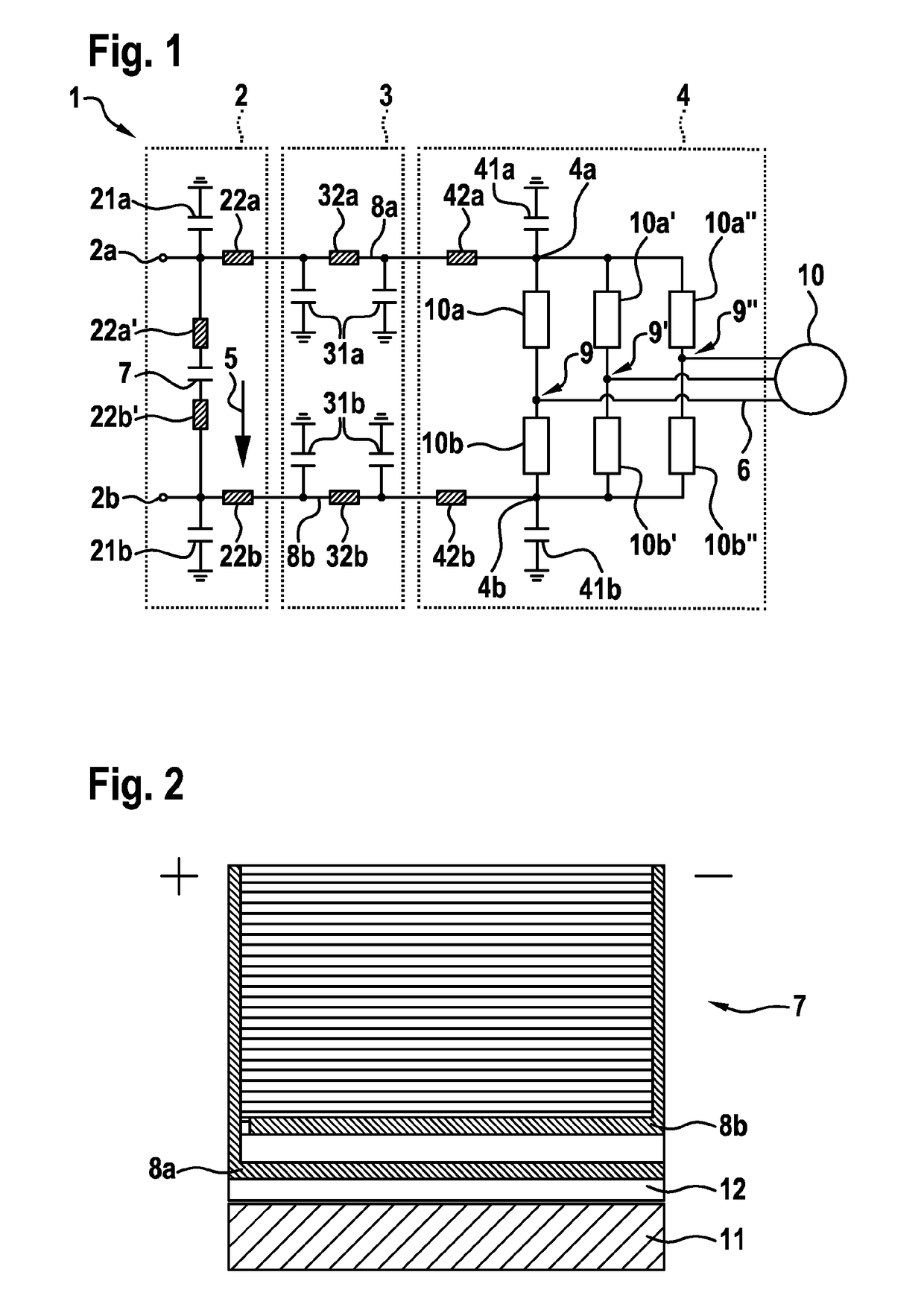Pulse-controlled inverter
a pulse-controlled inverter and power module technology, applied in the direction of dc-ac conversion without reversal, power conversion systems, electrical apparatus, etc., can solve the problems of increasing common-mode interference emissions and symmetrical embodiment of inverter power modules in particular, and achieves the effect of increasing common-mode interference emissions and little complexity
- Summary
- Abstract
- Description
- Claims
- Application Information
AI Technical Summary
Benefits of technology
Problems solved by technology
Method used
Image
Examples
Embodiment Construction
[0026]In the figures, identical reference numerals denote identical elements or elements having an identical function.
[0027]FIG. 1 shows a schematic illustration of an electric machine having a pulse-controlled inverter according to one embodiment of the invention.
[0028]In FIG. 1, the reference numeral 1 denotes a pulse-controlled inverter. The pulse-controlled inverter 1 is connected to an electric machine 10 and is embodied to supply said electric machine with a three-phase AC voltage (AC output voltage 6). For example, the electric machine 10 may be a synchronous or asynchronous machine of an electrically driven vehicle such as an electric car or a hybrid electric vehicle. However, it may also be possible here for the electric machine 10 of FIG. 1 to be used in stationary systems, for example in industrial drives, in power plants, in electrical energy recovery units, in energy storage units or similar systems. A further option for use of the electric machine 10 of FIG. 1 are gene...
PUM
 Login to View More
Login to View More Abstract
Description
Claims
Application Information
 Login to View More
Login to View More - R&D
- Intellectual Property
- Life Sciences
- Materials
- Tech Scout
- Unparalleled Data Quality
- Higher Quality Content
- 60% Fewer Hallucinations
Browse by: Latest US Patents, China's latest patents, Technical Efficacy Thesaurus, Application Domain, Technology Topic, Popular Technical Reports.
© 2025 PatSnap. All rights reserved.Legal|Privacy policy|Modern Slavery Act Transparency Statement|Sitemap|About US| Contact US: help@patsnap.com

